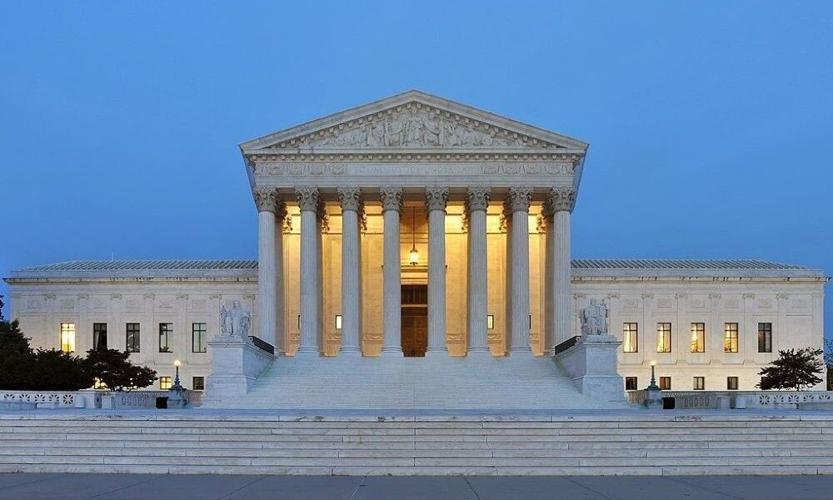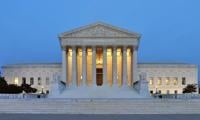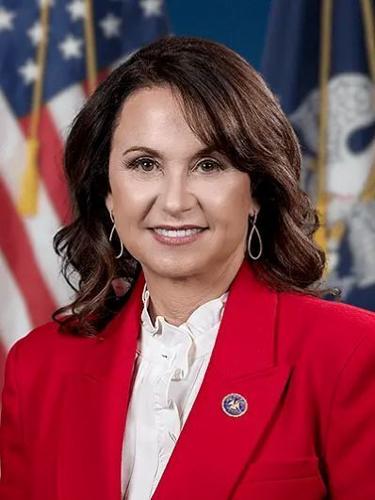
U.S. Supreme Court
WASHINGTON – At the heart of the U.S. Supreme Court case regarding redistricting in Louisiana is the question of whether the Voting Rights Act and the Equal Protection Clause can work together.
The court heard oral arguments last week in the case of Louisiana v. Callais about whether the state’s creation of a second majority-minority Congressional district to comply with Section 2 of the Voting Rights Act violates the Fourteenth or Fifteenth Amendments to the U.S. Constitution.
The Louisiana Legislature redrew its congressional map in 2024 to comply with Section 2 of the Voting Rights Act. The new map included two districts where a majority of voters are Black out of six districts total. About one-third of voters in Louisiana are Black. Plaintiffs in Louisiana vs. Callais say the redrawn map violates the Equal Protection Clause of the 14th Amendment because race was a key factor.
The plaintiffs in Callais, self-described as “non African-American” voters, say the race-based court-mandated redistricting to meet Section 2 is unconstitutional. They want the court to put an end to race-based political mapmaking under Section 2.

Chris Kieser with Pacific Legal Foundation
Chris Kieser with the Pacific Legal Foundation believes Section 2 is unconstitutional as applied, specifically its vote dilution claims that require racial consideration in redistricting. PLF side with Louisiana in the case.
“It went about how I expected,” Kieser said of the court’s oral arguments. “The justices seem to be gravitating toward the position of the United States District Court, which means preservation of the standard of not being able to use Section 2 vote dilution as a compelling interest. Remember, this is a racial gerrymandering claim, not a Section 2 claim.
“Districts should not be drawn based on the expected race of … whoever is going to be the member of Congress representing it.”
In an amicus brief he filed in the case on behalf of PLF, Kieser also maintains the Constitution protects voters as individuals instead of as racial groups. The brief also says assuming racial groups vote cohesively is a racial stereotype.
The brief challenges the constitutionality of race-based gerrymandering mandated under Section 2’s vote dilution framework while supporting the continued prohibition of individual voter discrimination based on race.
The brief argues that requiring states to create majority-minority districts based on racial group voting assumptions is a form of unconstitutional racial discrimination under strict scrutiny. It also says the Equal Protection Clause should apply fully to racial gerrymandering without exceptions for compliance with Section 2.
“I think it’s clear here, from the facts, this district was drawn for race,” Kieser said. “That’s the whole point of it in this case. It’s usually hard to prove racial gerrymandering, but the state was under order to draw a second Black district here.”
The PLF brief also argues that Section 2’s core protections against racial discrimination in voting remain constitutional and necessary but should focus on protecting individuals from racial discrimination rather than enabling race-based districting. It urges the court to clarify that Section 2 cannot be used to justify race-based redistricting and that states cannot avoid racial gerrymandering liability by citing fear of vote dilution claims.
“My guess is the court will affirm the judgment based on the racial gerrymandering claim,” Kieser said. “And they’ll say that you can’t use a vote dilution claim as a compelling interest to have race predominate in redistricting.
“I think it’s going to say you can still have the results test and that you don’t have to prove intent. The problem here is that you would need compliance with the Voting Rights Act for strict scrutiny to be satisfied.”
Kieser said part of PLF’s amicus brief also argues to lower standards for brining a racial gerrymandering claim.
“That would go toward the mission,” he said. “Make sure they’re using something other than race to draw these lines. A key point made by the U.S. in arguments is that this is really about politics.”
Kieser used Louisiana and West Virginia as examples. Both states are about 40 percent Democrat, and Louisiana has six seats in Congress as opposed to two for West Virginia.
“West Virginia is about 40 percent white Democrats, and Louisiana is about 40 percent Black Democrats,” he said. “But they’re treated very differently because of the race of the Democrats.”
Kieser said he doesn’t look at the issue politically, but experts have predicted a ruling in favor of Louisiana could mean up to 19 Congressional seats could flip from Democrat to Republican with redistricting. Those primarily would be in Southern states where the Voting Rights Act has been used more to create districts.
“But this is really not about race,” Kieser said. “We’re just using the Voting Rights Act for partisan fairness. That isn’t what voting laws should be about. But separating race and party can be difficult for anybody.”

Murrill
Louisiana Attorney General Liz Murrill said the Constitution prohibits “the sorting of Americans into voting districts based on their skin color.”
“And Louisiana wants no part of that abhorrent system,” she said. “We have made this argument for years, but the federal courts so far have refused to hear us. So, when they forced us to draw a new majority-minority district, we did so under protest and defended it because the Supreme Court’s backward precedents permit that district.
“But I am grateful that the court has now asked the parties to brief whether this entire system is constitutional. My answer: it is not. Our Constitution sees neither Black voters nor white voters; it sees only American voters.”
In the brief, Kieser writes that the Voting Rights Act was “one of the last century’s most consequential and successful pieces of legislation.”
“To deal with intransigent jurisdictions determined to prevent Black Americans from exercising the franchise, the VRA ‘employed extraordinary measures to address an extraordinary problem,’” he wrote. “It worked. Indeed, things have improved so dramatically that the VRA itself is now one of the main causes of racial discrimination in voting. …
“Put simply, holding Section 2’s vote-dilution applications unconstitutional will not stop the Voting Rights Act from performing its basic duty. Instead … it would focus the statute on the type of discrimination that the Equal Protection Act forbids – discrimination against an individual because of his or her race.
“At the same time, such a decision would reduce the pressure on jurisdictions to consider race when drawing electoral districts. It would be an important step toward achieving ‘the constitutional promise of equal treatment and dignity.’”






